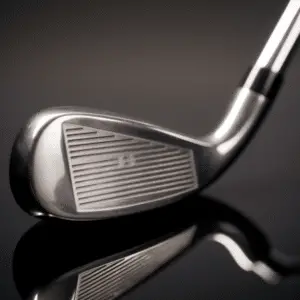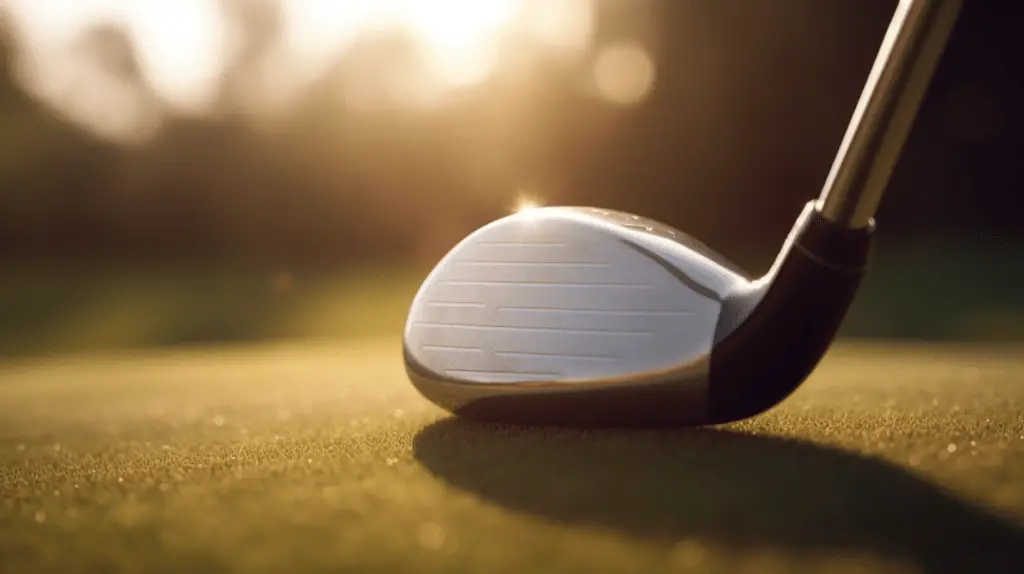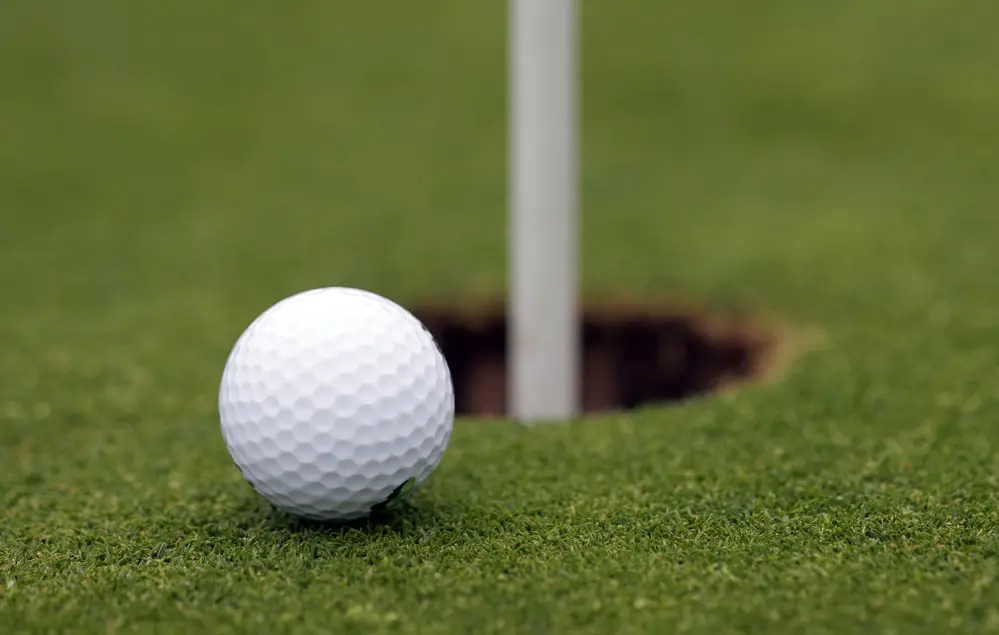Last Updated on June 13, 2023
When you’re out on the golf course, it’s essential to have a good understanding of your club options and when to use them. Enter the 10 iron – a lesser-known club that may not be in every golfer’s bag but certainly has its place for those who like to mix things up. You might’ve already come across various irons, such as the classic 9-iron or pitching wedge; however, if curiosity has been piqued about this elusive club, we shall gladly provide an insight into what exactly a 10 iron is and how it can potentially improve your game.
Nowadays, with advanced technology bringing forth innovative designs and materials used in clubs, the landscape of golf equipment continues evolving at breakneck speed. Amidst all these changes, some traditionalists still hold onto their trusty old-fashioned sets, while others embrace modernity wholeheartedly. Regardless of which camp you belong to, there’s always room for learning and expanding one’s knowledge base about different aspects of this cherished sport. So grab yourself a cuppa, and let us dive into everything you need to know about 10 irons in golf!
Understanding The 10 Club
Understanding the 10 Club is like peeling back the layers of an onion, revealing new and fascinating aspects that can influence one’s golf game. The world of golf clubs may seem complex at first glance, with a plethora of options available to both novice and seasoned players alike. Among these varying club types are golf irons, which come in different sizes and degrees for specific purposes on the course. One such iron golf club that has piqued interest among professional golfers and amateurs alike is the elusive 10-iron golf club.

The 10-iron golf club boasts a unique position within the realm of iron golf clubs. It features a higher degree than other traditional irons, making it ideal for approach shots requiring greater height and distance control. This type of club selection allows players to finesse their way around obstacles while maintaining accuracy – an invaluable skill when navigating tricky greens or bunkers during intense competition. Though not as commonly used as lower-numbered irons by many players, its increasing popularity demonstrates its effectiveness in modern-day play.
As you delve deeper into your exploration of this intriguing addition to your collection, consider how it could potentially revolutionise your gameplay strategy. Meticulous club selection ensures maximum efficiency during those critical moments on the green; thus, adding a versatile tool like the 10-iron to your arsenal might just be what distinguishes you from fellow competitors vying for victory on the fairway.
Usage In Professional And Amateur Games
In both professional and amateur games, a 10 iron is not commonly used by golfers. Golf club manufacturers have mostly phased out the production of this particular club due to its limited popularity and usage among players. Instead, experienced golfers tend to prefer wedges for shots that require more loft and control than what a typical 9 iron can offer.
There are several reasons why one might not find a 10 iron in most golf bags:
- Yards: A golfer can achieve similar yardage with other clubs such as high-lofted wedges or even a hybrid.
- Player skill level: Less skilled players may struggle with controlling the trajectory of their golf ball when using an unfamiliar club like the 10 iron.
- Lie angle: The lie angle on lower-numbered irons tends to be more suitable for most golfers’ swings, providing better contact with the ground at impact.
- Windy conditions: When playing under windy conditions, it’s usually advisable to opt for a less lofted club in order to keep the ball flight low and controlled.
- Lofted club alternatives: As mentioned earlier, there are alternative clubs available that provide similar functionality without requiring significant adjustment from the player.
While some traditionalists may still swear by their trusty old 10 iron, modern advancements in technology and equipment design have led many golfers to explore other options fitting their individual needs. With so many versatile pitching wedge choices now accessible across various budget ranges, it’s worth considering these contemporary solutions before investing time into mastering an increasingly rare piece of kit.
Top Pitching Wedges Available
Imagine a golfer looking to improve their short game, seeking out the perfect club that offers versatility and precision. The 10 iron, or pitching wedge (PW), is an essential part of any golfer’s arsenal for its ability to bridge the gap between longer irons and shorter wedges. With its moderate loft angle and club head design, it allows golfers to achieve high, accurate shots from various distances on the course.
There are several types of pitching wedges available in addition to the traditional 10 iron: gap wedge (GW), sand wedge (SW) and lob wedge (LW). Each type varies in degrees of loft, which determines how high and far the ball will travel upon impact with the clubhead. A typical PW has around 45-50 degrees of loft, whereas a GW ranges between 50-55 degrees, SW sits at about 54-58 degrees, and LW boasts up to 60-64 degrees. These varying lofts allow each type of pitch wedge to cater for specific scenarios where one might be more suitable than another depending on factors such as swing style or terrain.
Deciding When To Utilise This Club
A 10 iron, also referred to as an approach wedge, is a unique club in the game of golf. It’s designed for players who seek improvement in their short game by providing more control and precision on shots that require finesse rather than power. The average distance for this club ranges between the modern pitching wedge and the traditional sand or lob wedge.
Deciding when to utilise this marvellous club depends on several factors:
- Conditions: Consider the course conditions such as turf firmness, wind speed, and overall weather patterns. These elements can significantly impact your shot’s flight and outcome.
- Pitch: Examine how much elevation change there is between you and the green; if it’s substantial, using a higher lofted club like a pitching wedge might be necessary to achieve optimal trajectory.
- Distance: Determine your ideal range with each club through practice sessions at the driving range or during casual rounds of golf.
Take these points into consideration while evaluating whether or not to use a 10 iron on any given shot. Bear in mind that incorporating new clubs into one’s arsenal requires patience and persistence; thus, don’t expect immediate results after adding an approach wedge to your bag. Instead, focus on gradual progress over time – honing skills until reaching the desired level of proficiency.
Comparing With Other Clubs: 9 And Pitching Wedge
Ah, the elusive 10 iron! It’s rather ironic that we’ve been discussing golf clubs and yet failed to mention this mythical creature. You see, there isn’t actually a club called a “10 iron” in most mainstream golf sets – but let’s not allow that to stop us from comparing it with its closest relatives: the 9 iron and pitching wedge.
The 9 iron and pitching wedge are known for their ability to produce shorter shots with higher loft than other irons. This makes them particularly useful when approaching greens or escaping bunkers. The average golfer will find these two clubs invaluable for a wide range of shot scenarios. Let’s take a quick glance at some key differences between these two clubs:
| Club | Degree Loft | Typical Use Case |
|---|---|---|
| 9 Iron | 41-45 degrees | Medium-short approach |
| Pitching Wedge | 46-50 degrees | Short approach, chip |
It is important to note that stronger lofts have become more common as manufacturers develop new technologies to increase distance while maintaining control over iron shots. As such, some modern iron sets may include additional wedges (e.g., gap or sand) designed specifically for even shorter shots around the green. On the other hand, many players now opt for hybrid lofts, which combine aspects of both traditional irons and fairway woods – offering unique benefits tailored to suit individual preferences.
As our discussion transitions into loft degrees and distances, keep in mind how crucial it is for golfers to understand each club’s purpose within their set. Knowing when best to utilise your trusty pitching wedge or reliable 9 iron can make all the difference on those tight par threes, or tricky bunker escapes. So if you’re ever searching for that perfect balance between power and finesse on your next round of golf, remember what you’ve learned here about these versatile clubs.
Conclusion
So, is the 10 iron a secret weapon for golfers looking to improve their game? It certainly has its benefits and challenges, but ultimately it depends on an individual’s skill level and personal preferences. As we’ve explored, factors such as course conditions, wind, technique adjustments and shaft options all play important roles in utilising this unique club effectively.
Whether you’re a beginner or an experienced golfer, why not give the 10 iron a try? You may just discover that it becomes your new go-to club for those tricky shots where precision and control are key. Happy swinging!



